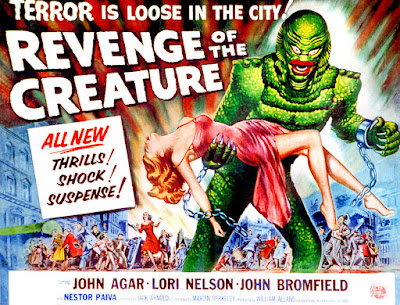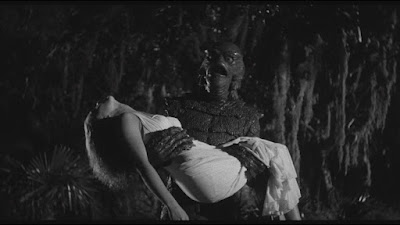*** (out of ****)
Although forever unfavorably compared to another sibling comedy team - the Marx Brothers - the comedy trio of the Ritz Brothers were by no means a poor man's imitation of the more celebrated comedy offspring threesome.
Much like the Marx Brothers, the brothers Ritz (Harry, Jimmy, and Al) found success on the vaudeville circuit prior to finding their way on the big screen. With an act built around singing and dancing to novelty songs, the brothers would begin their movie careers playing comic relief in many 20th Century Fox musicals, making their feature length movie debut in the Alice Faye picture, "Sing, Baby, Sing" (1936). As their popularity grew, the boys were given the opportunity to headline in their own vehicle, a college campus setting comedy, "Life Begins in College" (1937), perhaps a reference to the popular expression at the time, life begins at forty.
The college setting wasn't anything new for the Ritz Brothers since one of their earliest acts was called The Collegians, which may explain the choice for this to be their first headlining effort. And while "Life Begins in College" is referred to as "starring" the Ritz Brothers, in all honesty the situation isn't so far removed from the musicals they appeared in prior to starring Sonja Henie and Alice Faye. The brothers are still comedy relief to a love story.
Depending upon your perspective, that may make "Life Begins in College" slightly disappointing. The brothers aren't really the driving force behind the plot. The premise largely concerns itself with Lombardy College's star football quarterback, Bob Hayner (Dick Baldwin) and his attempts to court the coach's daughter, Janet (Gloria Stuart, best known for a role she would play 60 years later in "Titanic" (1997) as the old lady). The situation becomes tricky for Bob when the college tries to force Coach O' Hara (Fred Stone) out and replace him with a younger man. In an attempt to win favor with Janet, Bob claims the college will changed its mind. All of sudden, wouldn't you know it, Janet quickly warms up to Bob, after a rather chilly introduction between the two.
Further complicating Bob's life is a new student, Little Black Cloud (Nat Pendleton), the college's first Native American enrollee, despite the school allegedly being founded as an institution meant for the higher educational advancement of Native Americans (!). Little Black Cloud tries out for the football team as a quarterback, as a type of retribution for a prank Bob and his friends pulled on him. Janet was caught in the middle of it, causing her and Bob's initial friction.
Harry, Jimmy, and Al are also students at the college, working their way through school by running the Klassy Kampus Kleaners. Proving to be inept at their jobs they screw up the only customer order they have ever received, a request for a tailored made suit. Being the outsiders they are, the boys befriend Little Black Cloud - of course only after they con him out of $100 - by inviting him to join their fraternity, which the brothers are currently the only members of.
Of course what these viewers are (purposely) missing out on is the positive liberal - yes liberal! - messaging of "Life Begins in College". The white man and the Native American do become friends. There is respect between them for each man's athletic ability. A white female student (the funny and sadly forgotten Joan Davis) is even attracted to Little Black Cloud, completely unphased by their cultural differences. Compare this attitude and acceptance to the one presented in the Eddie Cantor comedy / musical, "Whoopee!" (1930), which also dealt with white and Native American characters. There the white woman could have only dated the Native American after finding out he had "white blood". This time around it isn't even presented as an issue of how white society would react to them being together. This is to say nothing of the commentary on the negative influence of money.
And still I wouldn't call "Life Begins in College" a great comedy or even a great Ritz Brothers comedy. Too much of the movie doesn't focus on the brothers. They are kind of a side show attraction, popping up every now and then with humorous musicals numbers to perform. While the songs are fun to listen to, it isn't side-splittingly funny. The best Ritz Brothers comedies were the ones that focused a bit more on them like "Straight, Place and Show" (1938) and "The Three Musketeers" (1939), often thought of as their best. Heck, I'll even take them in the horror / comedy movie, "The Gorilla" (1939) which has been universally panned.
It may seem odd to some for me to include the Ritz Brothers in my "year of me" celebration - a year long tribute to my favorite artists in honor of my 40th birthday and the 15th anniversary of this blog - but I've known of the trio since I was a child and first saw them, appropriately enough, in their big screen debut, a two reeler comedy, "Hotel Anchovy" (1934). Even as a child I initially thought, what are these guys, a knockoff of the Marx Brothers? Each brother seemed to cancel the other one out as all three of them were engaged in silly antics. There wasn't the typical straight man / comedian set-up. You would be forgiven for not knowing which brother was Harry, Al, or Jimmy. Still there was enough comic anarchy to keep me interested. That more than anything appealed to my sensibilities, even at a young age. Proving I never stood a chance of becoming a real life normal boy. Pinocchio had better odds. I was inundated with the comedy of the Marx Brothers, Olsen & Johnson, Ernie Kovacs, and the Ritz Brothers before I was old enough to go to school. It left a lasting impression on me and only continued to grow into a love for Mel Brooks comedies, "Airplane!" (1980), and the "Naked Gun" (1988).
Of the three brothers Harry was the standout, considered to be the only one that possessed any comedic ability. It has been implied Harry was offered a solo contract but refused to break up the act, leaving his brothers behind. What some viewers may not realize however is Harry Ritz inspired many of the great comedians that followed him - Mel Brooks, Sid Caesar, Jerry Lewis, and Danny Kaye among them. Brooks even went as far as to call Harry Ritz the "funniest man ever".
If you've never seen a Ritz Brothers comedy, I'm not convinced this is the best place to start. On the other hand, since they aren't the stars of the movie, you will only see them on-screen when they have something funny to do. "Life Begins in College" only works because of the brothers and some funny moments with Joan Davis. This is what makes the movie worth watching. The Ritz Brothers deserve a place in the history of comedy, if for no other reason than the influence their work hand on those that changed the landscape of comedy. The brothers were talented though and should not be forgotten. "Life Begins in College" provides some glimpses of what made them so special.

































